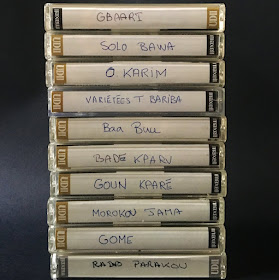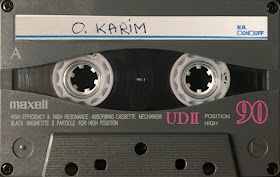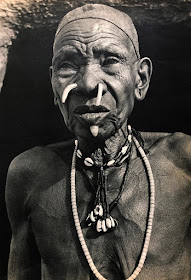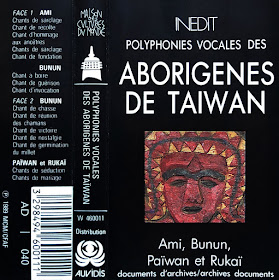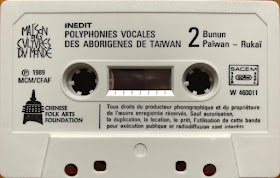The Wheels of the World – Classics of Irish Traditional Music – Shanachie 33001, released 1976 (LP)
This superb compilation of shellac 78 RPMs is an excellent introduction to the Golden Age of Traditional Irish music recorded by Irish emigrants in the United States during the 1920s and 1930s. The celebrated and influential musicians showcased here include fiddlers Michael Coleman (A2, B3), Packie Dolan (A4-B1), James Morrison (B6), and James Swift (A6); Uilleann pipers Patrick Touhey (A3, B4), Liam Walsh (A5), Tom Ennis (B2); and duets pairing fiddler Patrick Stack with piper Edward Mullaney (A1) and fiddler Michael J. Cashin with piper Tom Dyle (B5).
“This album portrays the true traditional dance of rural Ireland [notably reels and jigs]. Yet all of the musicians [except for Liam Walsh, who remained at home in Ireland] played in America’s large cities during the 1920’s and 1930’s. Confronted with a myriad of foreign customs and the attitude that culture should be secondary to material gain, the immigrant players asserted their identity in their music… They practiced with fervor and reached the highest standard of virtuosity… The players performed at weddings, in dance halls and in bars. Hundreds of traditional records were produced.”*
Cette superbe compilation de 78 tours est une excellente entrée en matière pour découvrir l'âge d'or de la musique traditionnelle irlandaise enregistrée par des émigrants irlandais aux États-Unis dans les années 1920 et 1930. Les grands musiciens présentés ici sont les joueurs de fiddle (violon irlandais) Michael Coleman (A2, B3), Packie Dolan (A4-B1), James Morrison (B6) et James Swift (A6); les joueurs d’Uilleann pipes (cornemuse irlandaise) Patrick Touhey (A3, B4), Liam Walsh (A5), Tom Ennis (B2); et des duos avec le fiddler Patrick Stack en compagnie du piper Edward Mullaney (A1) ainsi que le fiddler Michael J. Cashin avec le piper Tom Dyle (B5).
“This album portrays the true traditional dance of rural Ireland [notably reels and jigs]. Yet all of the musicians [except for Liam Walsh, who remained at home in Ireland] played in America’s large cities during the 1920’s and 1930’s. Confronted with a myriad of foreign customs and the attitude that culture should be secondary to material gain, the immigrant players asserted their identity in their music… They practiced with fervor and reached the highest standard of virtuosity… The players performed at weddings, in dance halls and in bars. Hundreds of traditional records were produced.”*
Cette superbe compilation de 78 tours est une excellente entrée en matière pour découvrir l'âge d'or de la musique traditionnelle irlandaise enregistrée par des émigrants irlandais aux États-Unis dans les années 1920 et 1930. Les grands musiciens présentés ici sont les joueurs de fiddle (violon irlandais) Michael Coleman (A2, B3), Packie Dolan (A4-B1), James Morrison (B6) et James Swift (A6); les joueurs d’Uilleann pipes (cornemuse irlandaise) Patrick Touhey (A3, B4), Liam Walsh (A5), Tom Ennis (B2); et des duos avec le fiddler Patrick Stack en compagnie du piper Edward Mullaney (A1) ainsi que le fiddler Michael J. Cashin avec le piper Tom Dyle (B5).
« Cet album présente les authentiques musiques de danses traditionnelles de l'Irlande rurale [notamment les reels et les jigs]. Paradoxalement, tous ces musiciens [à l’exception de Liam Walsh qui continua de vivre en Irlande] se produisaient dans des grandes villes américaines dans les années 1920 et 1930. Exposés à de nombreuses coutumes étrangères et à un environnement dans lequel la culture est reléguée au second plan par rapport au gain matériel, les musiciens immigrés affirmaient leur identité à travers la musique qu’ils pratiquaient avec grande ferveur pour atteindre un niveau de virtuosité inégalé… Ces musiciens animaient des mariages, des dancings et des bars, et ont enregistré de nombreux disques 78 tours. »*
*From the liner notes of Barry O’Neill
Download
Photographs below are from Encyclopédie des Instruments de Musique by Alexander Buchner, Gründ, 1992, and Treasures of Early Irish Art, 1500 B.C. to 1500 A.D, Metropolitan Museum of Art, 1977.
Harp, hurdy gurdy, psaltery zither, and fiddle. Irish miniature late 13th-early 14th century:















